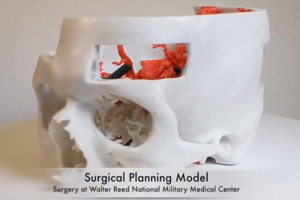You know how you’re always saying that everything should be free? Especially science stuff? Maybe you’re not saying that, unless you’re broke, but it’s definitely something that I shout at ads on the TV. Finally, my (possibly your) wants are starting to be met, at least in the realm of science. The USA’s National Institute of Health (NIH) has created an online platform for the exchange of 3D printable biomedical files.

for Electrophoresis? See the myriad of models already up on the site in the promo reel below:
If you feel as though the 3D Print Exchange is missing the molecular structure of your recently discovered macromolecule, you can design and upload your own printable files. Of course, we can’t expect every doctor/scientist/educator to know how to create CAD models of such things, so the NIH is trying to make it as simple as possible. The site will have prewritten scripts that can turn 3D medical data, such as free models from the Electron Microscopy Database, into 3D printable files using the open-source UCSF Chimera software package.

All of the benefits of the NIH site are magnified for those in developing countries. 3D printable models for education may be more affordable than those purchased from manufacturers and access to knowledge produced by leading research institutions may become increasingly more accessible. When the site does begin to introduce 3D printable medical devices and the like, users in remote areas will be able to 3D print objects like prostheses for their local populations.
This is very exciting stuff! I can’t wait for Pfizer to get the hint and upload their chemical formulas to the NIH 3D Print Exchange. [Ed: It may take a while, Pfizer is currently too busy aiming for pharma world domination in its bid to acquire Astra Zeneca!]
Hat tip to Pjotr du Mât on Facebook.
Source: NIH 3D Print Exchange



